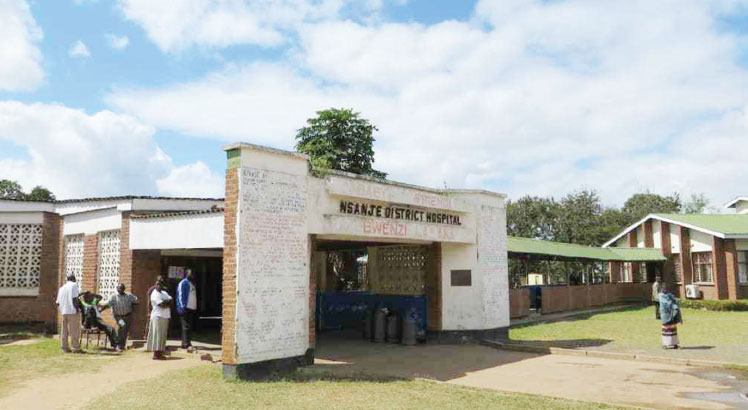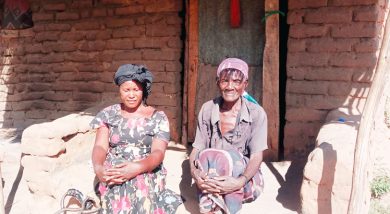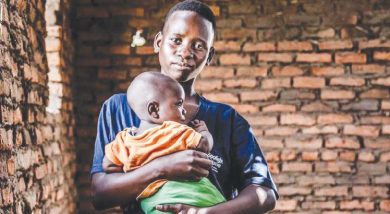Vaccine reduces malaria burden
From December to March each year, primary health facilities in Nsanje used to fill up with gravely sick young patients as malaria transmission rates rose amid the rainy weather.
Records from the Nsanje District Health Office (DHO) indicate that before 2019, health facilities registered as many as eight to 10 malaria episodes per child annually.
“This is a lot for one child,” says Nsanje DHO spokesperson George Mbotwa.
In April 2019, the World Health Organisation rolled out the world’s first malaria vaccine in Malawi as part of the three-country pilot programme.
Since then, there has been a noticeable change to the frequency and the severity of malaria bouts in this hard-hit district.
There has also been a major improvement in rates of under-five hospitalisations nationwide.
“We are now registering four or fewer episodes or less severe malaria episodes per child per year. It’s still a lot, but at least mild. Generally, this vaccine in 2019 has contributed to the drop in malaria cases,” Mbotwa says.

That is not only encouraging for the most acutely at-risk children and their families, Mbotwa explains.
With fewer severe malaria cases being transferred to the district hospital from local health facilities, healthcare workers are freer to attend to other important responsibilities.
“When there are severe cases at these facilities, they call for an ambulance to ferry patients for intensive treatment here. Malaria has been the major contributing factor to admissions at this hospital. Fewer cases mean we can concentrate on other things,” Mbotwa says.
Three deaths daily
The Ministry of Health (MoH) ranks malaria among the leading causes of death in the country, claiming three lives a day.
“Under-fives make up to 50 percent of all cases,” the National Malaria Control Programme manager Dr Lumbani Munthali says.
Malawi was the first country worldwide to pilot the RTS,S malaria vaccine.
Following the pilot’s success, more African countries have this year launched the jab as part of their routine immunisation schedules.
Within Malawi, too, access has expanded.
Munthali told Vaccines Work that the malaria vaccine is being provided as part of the under-five routine immunisation programme in 11 of the country’s 28 districts.
They include Karonga, Nkhata Bay, Mchinji, Lilongwe, Ntchisi, Balaka, Mangochi, Machinga, Chikwawa, Phalombe and Nsanje.
“It works”
Children in these areas receive four vaccine doses free of charge. The first is administered at five months old, the second at six months old and the third at seven months old. A final shot is given to children aged 22 months.
“We have seen a reduction in under-five in-patient admissions,” says Munthali. “Nsanje, alongside Balaka, Chikwawa, Mangochi and Ntchisi has recorded the most improvement in admissions and under-five deaths. The vaccine is administered alongside other malaria prevention interventions, but Munthali believes “the vaccine has contributed significantly to this reduction”.
Overall, he states, the rollout is seeing a positive response.
He says: “The vaccine supplies are available and there is also lots of partner support towards awareness, supervision and review meetings. I’m glad that for this vaccine, mothers, communities and caregivers have been very responsive because they have seen its impact,”
Laban Mtenje, a health surveillance assistant (HSA) at Ndamela Health Centre in Nsanje, remembers how busy January and February used to be with malaria patients.
“This isn’t happening anymore, at least in the past few years. For example, last month, 12 under-five children were tested for malaria, but none tested positive. This is a sign that the vaccine is working,” he asserts.
Another community health worker, Kazembe Vuntande, says parents hesitated to present children for the vaccine because it coincided with Covid-19 immunisation.
“But they have now come through and are vaccinating their children without hesitancy,” he says.
Mary Kalua, who has two young children in Ngomwa Village in the district, is confident of the benefits of the vaccine.
“I have seen children getting deformed or dying due to malaria. I don’t want any of my children to go through this,” she says. “My newborn baby will receive the first dose at five months, but my other three-year-old child received all the doses and she has never had malaria.”
However, the benefits are not yet being seen everywhere.
Mbotwa points out that geographically hard-to-reach zones such as swampy areas, have seen higher rates of vaccine defaulting.
“These places are only reached through outreach clinics, which are only possible if we have resources. At times we would want to have these outreach clinics, but may not have fuel to do them,” he says.
Vaccine’s future
Extended Programme on Immunisation (EPI) Programme manager Mike Chisema says the Ministry of Health plans to expand the malaria vaccine to nine more districts by 2026.
“The remaining districts nationwide will be covered by 2028. The vaccine expansion has been slow due to vaccine supply constraints,” he says.
However, Chisema cautions that the malaria vaccine is not a perfect shield and other interventions, including bednets and seasonal malaria chemoprevention, remain essential.
“Take note, this is not a standalone strategic intervention, but complementary,” he says. “As such, not everything can be attributed to it.”—Gavi.orG





